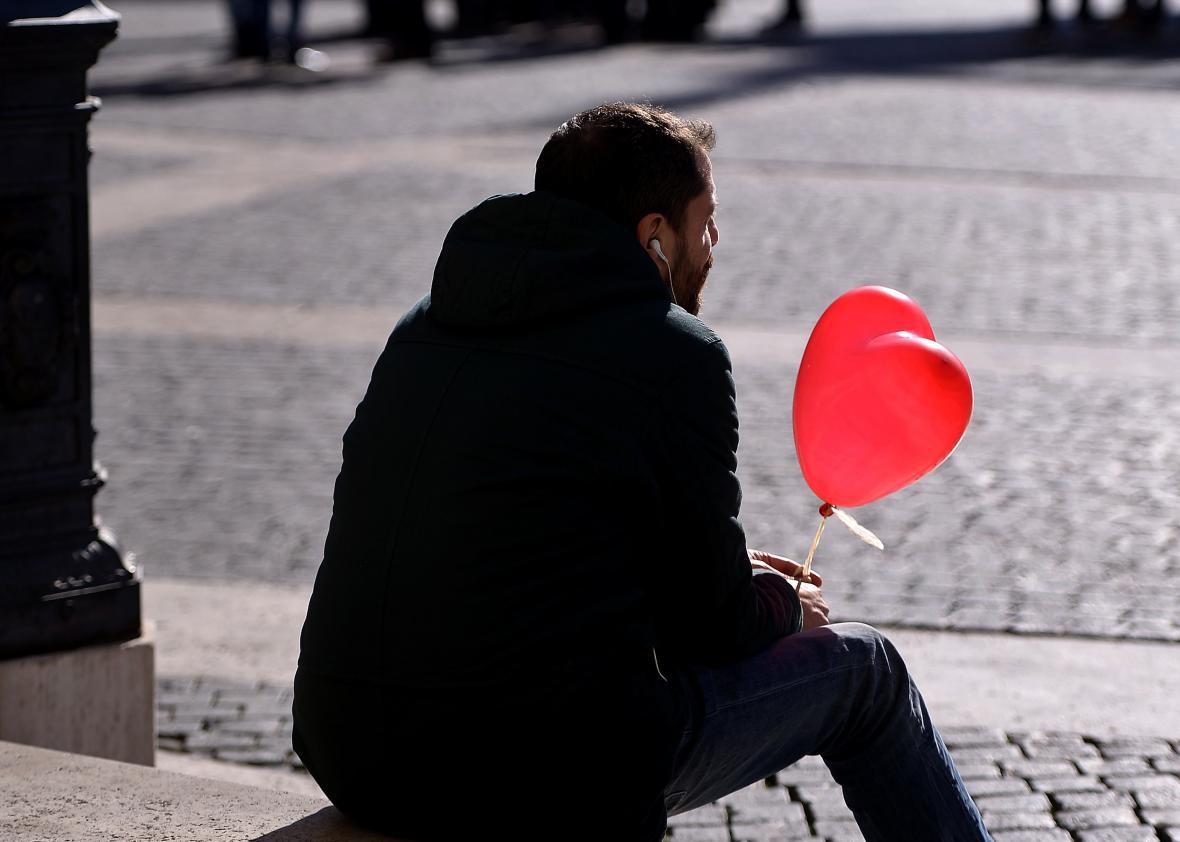Conventional wisdom, and many years of social science, have long said that the longer people wait to get married, the less likely they are to get divorced. There are obvious reasons why. With age, people mature, finish school, and settle into careers, which gives them the emotional and financial wherewithal to manage lifelong romantic commitments. The more we settle into ourselves, the theory goes, the better we are at settling down with others.
A new analysis by Nicholas Wolfinger, a sociologist at the University of Utah, challenges that idea a bit. Using data from the National Survey of Family Growth, he finds that today, divorce risk declines for people who wait until their late 20s and early 30s to get married. But it rises again for those who delay walking down the aisle until their late 30s.
Again, this seems to be a new phenomenon. Wolfinger finds that during the mid-1990s, the odds of getting divorced continued declining the longer individuals held off on their first marriage. (For our purposes, just pay attention to the blue trend line. The gray shaded areas represent what are known as confidence intervals.)
But now, the trend is u-shaped. “My data analysis shows that prior to age 32 or so, each additional year of age at marriage reduces the odds of divorce by 11 percent,” he writes. “However, after that the odds of divorce increase by 5 percent per year.” Call it the Goldilocks theory of marriage: Getting married too early is risky, but so is getting married too late. Your late 20s and early 30s are just right.
How come? Wolfinger isn’t sure. But controlling the data for demographic and personal characteristics such as race, education, religion, sexual history, family background, or the size of the cities survey takers lived in didn’t change the results, suggesting none of those factors could explain it. Ultimately, the professor suspects that there’s a lot of self-selection at play: The sorts of people who wait a very long time to say “I do” just might not really be the marrying types, whether they realize it or not. Or, even if they are, their dating pool might have been whittled down to people who aren’t.
But that would explain today’s pattern, not the change we’ve seen since the turn of the century. And the reason behind that shift is also mysterious. “This is the $64,000 question,” he told me. “I honestly don’t have a great explanation. What I know for certain is it has happened.”
